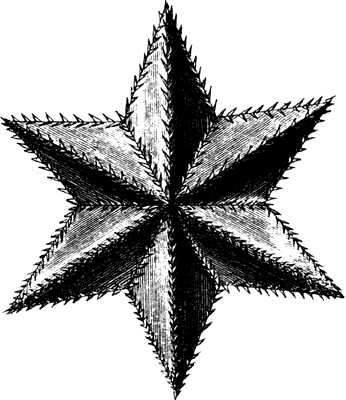LITR 5731 Seminar in American
Multicultural Literature: Immigrant

Sample Student Midterms, summer 2006
|
Midterm Essay |
Kenneth Fisher
Part II: The Long
Essay (started: 2:17pm / Finished: 4:07pm)
I must admit that this course has differed itself from other multi-cultural studies courses I’ve taken in the past. I believe this distinction to be because of the courses focus on the minority, immigrant, and dominant culture, the criteria we’ve developed for telling them apart, and the stories which focus on the different stages, and dynamics of these stories. This is all framed by an underplaying theme of survival within the American system and an optimism that strengthens the individual to endure the trials of building a live within the American System.
First, let us start by identifying the states of the immigrant narrative. The first stage is the journey from the country of origin to the United States. After arriving in the United States, immigrant’s experience a period of culture shock, as they experience things outside their own culture. This period of time is marked with confusion and often times fear. Next is assimilation, where the immigrant learns the ways of the dominant culture, and begins to shed old beliefs and traditions in favor of those of the dominant culture. Finally, after assimilation is underway, is a resurgence of the old culture. (Objective 2) Its often the case that the individual who makes the journey into the United States doesn’t see all these steps into completion, thus the immigrant narrative becomes a multi-generational story through which the second or third generation must complete the latter two steps of the narrative’s outline.
The immigrant’s story varies from individual to individual, but always seems to hold certain underlying similarities that serve as the definition of the immigrant narrative (objective 2). For example, an immigrant must first leave his or her country of origin and journey to the United States. This journey can take several different forms, be it a walk across political barriers, or crossing the sea via boat or plane. This journey is usually a product of the alluring quality of the American Dream (objective 1), which promises immigrants the chance to prosper beyond the abilities of their home country. We see this optimistic outlook, this faith in the American Dream, foremost in Mohr’s The English Lesson. Many of the characters within the story cite the American Dream as their reason for being in the country. Perhaps its Mohr’s character, Diego Torres, who states it the most obviously, he states that he’s in America to “to improve my economic situation.”
Gish Jen’s In the American Society demonstrates the immigrant’s assimilation into the dominant culture. In the story, the Changs are Chinese immigrants who have already established themselves in the U.S. Their father owns a food store which seems to be doing stable business. This position of an entrepreneur settles pristine inside the American Dream’s promises, and elevates Mr. Chang into the position of a member of the dominant culture in his relationship with the immigrants to whom he hires. To these employees, Mr. Chang is the dominant cultural figure, and still his wife is attempting to assimilate her family further by getting them membership into the local country club. (objective 2: variations of status) its obvious that Mr. Chang still needs to adapt to the dominant culture to be accepted by them in the fact that he has to purchase a suit suitable to wear at the country club’s functions. The ending of the story, to me, spoke loudest of Mr. Chang’s place in American society. Jen writes, “My father flung the polo shirt into the water with such force that part of it bounced up into the air like a fluorescent fountain. …My father hurled the coat into the pool too. ‘We’re leaving,’ he said grimly. ‘Leaving!’” (Jen, pp. 170-171) The father’s stance here declares his assimilation into the dominant culture complete. He is an American and knows that as such, he can be free to live and act as he sees fit. He needn’t alter himself to please anyone anymore.
Minority groups differ from immigrant groups in the fact that minority groups didn’t choose to come to the United States of American but somehow had the United States of American thrust upon them. The two strongest examples of minority groups in the United States are the African American’s who have ancestors who were brought over in slavery, and the Native American’s, who were originally on the United States before the country was founded. (Objective 3)
The assimilation of minority groups is often resisted by the members of the minority group. Minority groups can be cited as having strong inter-group cultures that differ from the dominant culture. The most obvious of these groups is the Native Americans. In Silko’s short story entitled The Man to Send Rainclouds, we see the clash between the minority world and the Dominant catholic belief in a brief exchange between Leon, an Native American man, and the Catholic father:
“…I’ve only came to ask you if you would bring your holy water to the graveyard. …Why didn’t you tell me he was dead? I could have brought the Last Rites anyway. … It wasn’t necessary, Father. …For a Christian burial it was necessary. …It’s OK, Father, we just want him to have plenty of water. … You know I can’t do that, Leon. There should have been the Last Rites and a funeral Mass at the very least.” (Silko, pp. 207-208)
Through this exchange we can see the different worlds of the Native American’s and the dominant culture clashing. The priest’s beliefs are different from those of Leon’s on the rituals to be performed at the death of Leon’s grandfather, a custom deeply rooted in Native American culture. Eventually, the priest folds to the request of the Native American culture and supplies the holy water for the burial ceremony.
In James Baldwin’s No Name in the Street, James Baldwin illustrates a clear and strong separation between the members of the minority race and the members of the dominant culture as though the relationship between the two factions is one of war. “’Wait a minute,’ he said, ‘let me stand up and tell you what I think we’re trying to do there.’ ‘We?’ [Bladwin] cried, ‘what motherfucking we? You stand up, motherfucker, and I’ll kick you in the ass!’”(Bladwin , p.289) Clearly Baldwin is upset by his friend, another member of the African American minority, who claims himself as part of the United States of American and backing the government’s position in the war of Vietnam. This inclusion into the dominant culture is viewed by the narrator as a betrayal, as though its forbidden to become a member of the dominant culture. A stark contrast to the immigrant’s opinion that they need to assimilate into the dominant culture.
Afro-Caribbeans , and Mexican-Americans differ from the two listed models because they exist in a status between the immigrant and the minority narrative. The Mexican American can be viewed as a minority because much of the south western states, from Texas to California, was once a part of, and thus settled by, Mexico. These individuals fit in the status of minority because their lands were suddenly absorbed into the United States of American via political means. Since its not logical to check the ancestry of all Mexican American’s to determine whether they are of these original settlers, or of a bloodline that’s crossed over the Mexican/American border (thus they’d be an immigrant), we blur the categories to encompass them.
Much is the same for Afro-Caribbeans. Since many of them have black skin, we cannot differ from those who came over from the Caribbeans, and those who were brought to the United States via slavery. Though, as we see in Danticat’s Children of the Sea, the Afro-Caribbean does indeed make a journey from the old world to the new. Danticat’s story is a heart breaking narration of one such journey.
Martin Espada, in his poem Coca-Cola and Coco Frio, shows us the application of the final step in the immigrant model, reassertion of the home culture. In the poem, a young boy raised in the United States returns to the home country of his parents, and learns the beauty and value of this part of his heritage.
El Patron, by Nash Candelaria, shows us the minority resistance to assimilation in the character of the father, who blames the American Dominant culture for the problems he is having with his son running away from the draft. “‘I should have never let him go off to college,’ Senor Martinez said. ‘That’s where he gets such crazy radical ideas. From those rich college boys whose parents can buy them out of all kinds of trouble.’” Here, the dominant culture is viewed as a corruptive force, supplanting the ways of Senor Martinez’s culture with their own ‘radical’ ideas.
|
|
|
|


